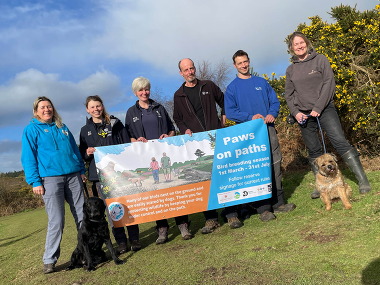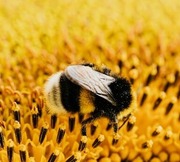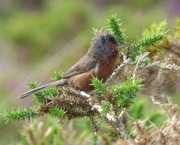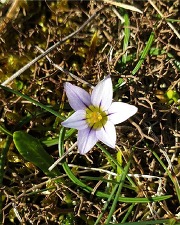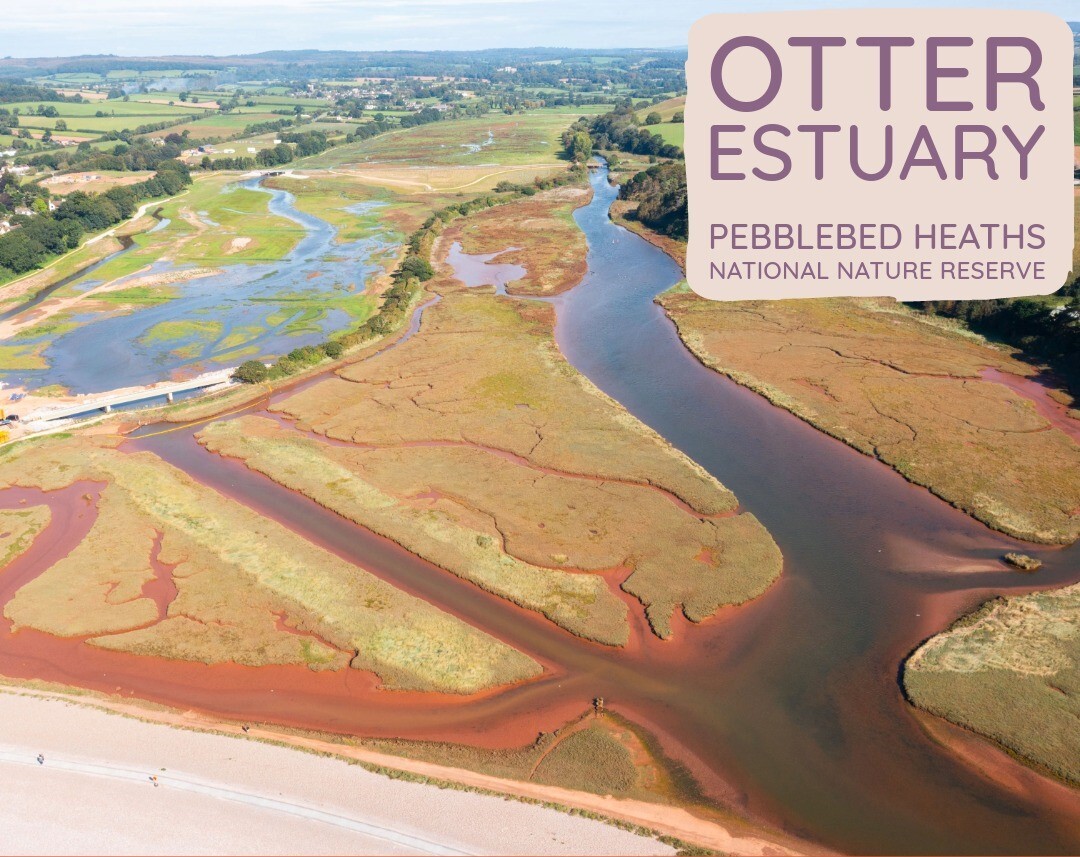Text-only version of this email
Explore the latest in wildlife this spring. From fascinating facts to adorable moments, our newsletter brings nature to your inbox.
South East Devon Habitat Regulations Partnership - Shores Heaths and Dunes
Spring is coming!
Bluebells in a woodland photo
With the weather slowly improving, daffodils on the verges and blossom appearing on the trees we can start to look forward to the season of fresh, green growth, brighter colours, longer days and much more bird song.
With the changing seasons, our winter birds are heading back to all corners of the globe to begin their breeding and we might be lucky enough to see large flocks of Brent geese leaving the estuary. When we spot the first swallows arriving back from Africa, then we'll know spring is here!
________________________________________________________________________
Eyes down for Bird Breeding Season on the Pebblebed Heaths.
Photo of site managers, wardens and Devon Loves Dogs for breeding birds campaign. [
]
As the peak season for bird nesting arrives, it’s crucial for us all to play our part in helping East Devon’s wild birds raise their young and thrive.
From 1 March until 31 July, birds take advantage of warmer weather, availability of food and nesting materials to start breeding, making it essential to give them the undisturbed space they need.
*Read more* [
]
________________________________________________________________________
All about breeding bird season.
Long tailed tit nest [
]
*What’s all this then?* Spring is in the air, plants are growing, and the earliest of our joyful wildflowers are coming into bloom on nature reserves around the estuary and across the commons. Ah lovely, now if someone could just tell the weather!
The official date for the beginning of Breeding Bird Season (1 March) has arrived – and from here on in, certain activities – such as trimming or cutting trees, bushes, hedges and rough vegetation – are now restricted where birds are nesting, so that active bird nests aren’t damaged or destroyed, and specific bird species, such as nightjar and Dartford warbler, aren’t disturbed.
*Read more* [
]
________________________________________________________________________
What to look out for?
________________________________________________________________________
*Sand lizard*
From late March onwards, the sand lizard will emerge from hibernation once again on Dawlish Warren.
Sand lizard
________________________________________________________________________
*White-tailed bumblebee*
The earliest and most active bumblebee, you can see them almost anywhere, from woodlands to farmland to gardens.
White tailed bumblebee
________________________________________________________________________
*Dartford warbler*
With a dark colouration, chestnut belly, red eyes and long tail, this small bird is resident to the Pebblebed Heaths.
Dartford warbler
________________________________________________________________________
*Sand crocus*
A small, rare, native flower only found at two sites in the UK and Dawlish Warren is one of them. They flower from April on sunny days.
Sand crocus
________________________________________________________________________
Otter Estuary wetland awarded National Nature Reserve status
Lower Otter Estuary [
]
February saw us join our project partners, Clinton Devon Estates & The Pebblebed Heaths Conservation Trust, to celebrate the fabulous success of the Lower Otter Restoration Project – now recognised as the Otter Estuary National Nature Reserve!
*Read more* [
]
________________________________________________________________________
A heathland update from the RSPB...
dog on a lead [
]
Alice, a residential volunteer on Aylesbeare Common with the RSPB sent us an update about what they have been up to over the winter.
*Read more* [
]
________________________________________________________________________
A beginners guide to birdwatching.
Male stonechat photograph [
]
When you first start, birdwatching can feel a bit overwhelming as there’s more than 600 species of bird in the UK, plus a few extra migrants. However it's worth looking at the type of birds that you get in different habitats.
For instance, in parks and gardens, birds you’re likely to see such as blackbirds, magpies and wood pigeons feed on short grass lawns, and small birds such as robins and sparrows are often found in trees and bushes.
*Read more* [
]
________________________________________________________________________
Getting out & about on the Exe
Estuary view [
]
Looking for somewhere to take the family over the weekend? How about the Exe Estuary trail [
]?
*Read more* [
]
________________________________________________________________________
Sign blindness, a curious phenomenon
birds on a sign [
]
*What is it and what can we do about it?*
We’re all guilty of ignoring signs sometimes, how often have you driven past a ‘Road Closed’ sign or ignored a ‘No dogs’ sign? Sometimes we don’t even see these signs.
*Read more* [
]
twitter [
] facebook [
] instagram [
]
@SEDevonWildlife
SUBSCRIBER SERVICES:
Manage Subscriptions [
]
|
Unsubscribe All [
]
|
Help [
]
body .abe-column-block {min-height: 5px;}
________________________________________________________________________
This email was sent to david.newton@trustedcarcheck.co.uk using GovDelivery Communications Cloud on behalf of: East Devon District Council, Blackdown House, Heathpark Industrial Estate, Honiton EX14 1EJ GovDelivery logo [
]
body .abe-column-block { min-height: 5px; } table.gd_combo_table img {margin-left:10px; margin-right:10px;} table.gd_combo_table div.govd_image_display img, table.gd_combo_table td.gd_combo_image_cell img {margin-left:0px; margin-right:0px;} table.govd_hr {min-width: 100%;}
Show All
 East Devon District Council
UK · east-devon-district-council
View All
East Devon District Council
UK · east-devon-district-council
View All



